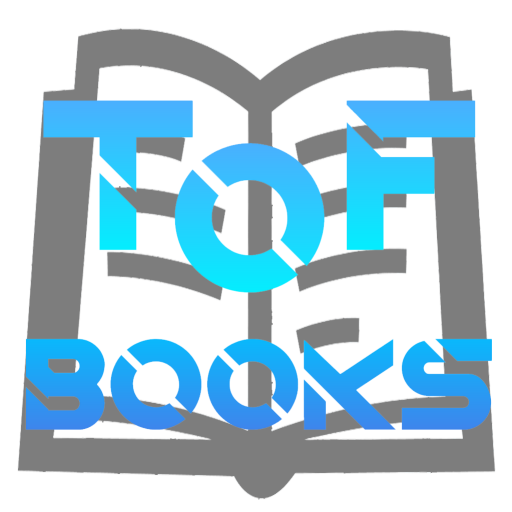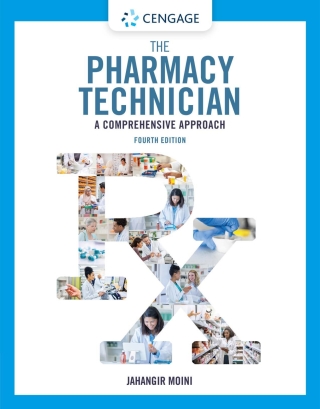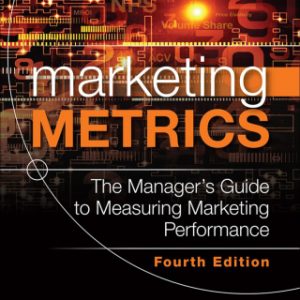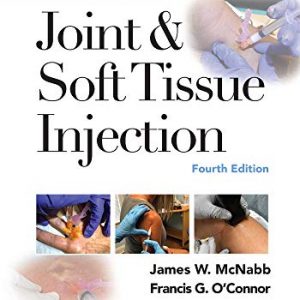Buy The Pharmacy Technician: A Comprehensive Approach, 4th Edition PDF ebook by author Jahangir Moini – published by Cengage Learning in 2021 and save up to 80% compared to the print version of this textbook. With PDF version of this textbook, not only save you money, you can also highlight, add text, underline add post-it notes, bookmarks to pages, instantly search for the major terms or chapter titles, etc.
You can search our site for other versions of the The Pharmacy Technician: A Comprehensive Approach, 4th Edition PDF ebook. You can also search for others PDF ebooks from publisher Cengage Learning, as well as from your favorite authors. We have thousands of online textbooks and course materials (mostly in PDF) that you can download immediately after purchase.
Note: e-textBooks do not come with access codes, CDs/DVDs, workbooks, and other supplemental items.
eBook Details:
Full title: The Pharmacy Technician: A Comprehensive Approach, 4th Edition
Edition: 4th
Copyright year: 2021
Publisher: Cengage Learning
Author: Jahangir Moini
ISBN: 9780357371350, 9780357446355
Format: PDF
Description of The Pharmacy Technician: A Comprehensive Approach, 4th Edition:
Discover the ideal first resource for building a successful pharmacy career with Moini’s THE PHARMACY TECHNICIAN: A COMPREHENSIVE APPROACH, 4E. Designed for those just entering the field, this edition helps you master the latest knowledge and skills you need to work successfully with today’s licensed pharmacists in a variety of clinical or retail settings. Engaging readings explore the latest medical and pharmaceutical terminology, pharmaceutical calculations, and techniques as well as critical topics, such as sterile compounding, record keeping, law, ethics, insurance, and billing. Proven learning aids help you master medical and pharmaceutical terminology and avoid today’s most common errors, while strengthening your critical thinking and problem-solving skills. Written to the latest accreditation standards, this edition is invaluable for experienced pharmacy technicians pursuing continuing education or for anyone preparing for national certification exams.Important Notice: Media content referenced within the product description or the product text may not be available in the ebook version.
Table of Contents of The Pharmacy Technician: A Comprehensive Approach, 4th Edition PDF ebook:
DedicationContentsContributorsPrefaceAbout the AuthorSection I: Pharmacy PracticeChapter 1: History of PharmacyOverviewAncient through Early Modern EraTransition from the Ancient to the Post-Classical World-Formalization of the Pharmacy ProfessionEmpiric EraIndustrialization EraPatient Care EraBiotechnology and Genetic Engineering-The New HorizonSummaryReview QuestionsCritical ThinkingWeb LinksReading ListChapter 2: The Foundation of Pharmaceutical CareOverviewThe Profession of PharmacyEducational RequirementsThe Role of the PharmacyProfessional OrganizationsCode of EthicsJob OpportunitiesSummaryReview QuestionsCritical ThinkingWeb LinksReading ListChapter 3: Pharmacy Law, Ethics, and Regulatory AgenciesOverviewLaw and Ethics in PharmacyLegal LanguageGoverning BodiesTypes of LawViolations of the LawPharmacy Law and Regulation at the State LevelPharmacy Law and Regulation at the Federal LevelFederal Regulatory AgenciesDrug RecallsDrug StandardsThe Ethical Foundation of PharmacySummaryReview QuestionsCritical ThinkingWeb LinksReading ListChapter 4: Communication with Patients and CustomersOverviewCommunication ProcessVerbal CommunicationWritten CommunicationNonverbal CommunicationCommunication with OthersMethods of CommunicationTypes of CustomersProfessionalismBarriers to CommunicationNegative CommunicationDefense MechanismsDealing with ConflictEliminating Barriers to CommunicationSummaryReview QuestionsCritical ThinkingWeb LinksChapter 5: Pharmaceutical Information and ReferencesSources of Drug InformationReview QuestionsWeb LinksChapter 6: Prescriptions and ProcessingOverviewThe PrescriptionSummaryReview QuestionsCritical ThinkingWeb LinksChapter 7: Dosage Forms and Routes of AdministrationOverviewDrug SourcesDosage ConsiderationsDosage Forms of DrugsPrinciples of Drug AdministrationSummaryReview QuestionsCritical ThinkingWeb LinksChapter 8: Measurement SystemsOverviewThe Metric SystemHousehold MeasurementsApothecary SystemUnits of Measure Used for MedicationsConverting within and between SystemsSummaryReview QuestionsCritical ThinkingWeb LinksChapter 9: Conversion and CalculationsOverviewArabic Numbers and Roman NumeralsBasic Math SkillsMethods of CalculationCalculation of Oral MedicationsCalculation of Parenteral MedicationsStandardized Units of Drug DosagesIntravenous Solutions and CalculationsPediatric Dosage CalculationsSummaryReview QuestionsCritical ThinkingWeb LinksPharmacy Practice SettingsSection II: Pharmacy Practice SettingsChapter 10: Safety in the WorkplaceOverviewOccupational Safety and Health Administration StandardsStandards and Regulations within the Pharmacy ProfessionUniversal PrecautionsEmployee ResponsibilitiesSummaryReview QuestionsCritical ThinkingWeb LinksChapter 11: Hospital PharmacyOverviewWhat Is Hospital Pharmacy?Policies and ProceduresHospital ProtocolMedication OrdersMedication Dispensing SystemsSterile ProductsInventory ControlAutomationThe Responsibilities of Pharmacists in HospitalsThe Roles and Duties of Pharmacy Technicians in HospitalsFuture of Hospital PharmacySummaryReview QuestionsCritical ThinkingWeb LinksChapter 12: Community PharmacyOverviewCommunity PharmacyThe Role of the Pharmacy TechnicianPrescription ProcessingOrganization of the Retail PharmacyThe Professional Characteristics of Pharmacy TechniciansSummaryReview QuestionsCritical ThinkingWeb LinksChapter 13: Advanced PharmacyOverviewLong-Term Care Pharmacy ServicesHome Health Care PharmacyHome Infusion PharmacyHospice PharmacyAmbulatory Care PharmacyMail-Order PharmacyCentral Fill PharmacyInternet PharmacyNuclear PharmacySummaryReview QuestionsCritical ThinkingWeb LinksChapter 14: Extemporaneous Prescription CompoundingOverviewExtemporaneous CompoundingCompounding of Liquid DrugsCompounding of Semisolid DrugsCompounding SuppositoriesCompounding of Solid DrugsCompounding Parenteral ProductsSummaryReview QuestionsCritical ThinkingWeb LinksChapter 15: Aseptic Technique and Sterile CompoundingOverviewParenteral PreparationsTypes of Asepsis and Ways to Achieve ItEquipment and SuppliesLaminar Airflow HoodsGlove Box HoodsStorage and StabilityCompounding of a Parenteral ProductCompounding of a TPN ProductPreparing an Intravenous PiggybackLarge-Volume Parenteral PreparationsPreparation of Intravenous AdmixturesUnited States Pharmacopeia (USP) Chapter <797>United States Pharmacopeia (USP) Chapter <800>Noninjectable ProductsCompounding RecordsPolicies and Procedures for Sterile Product PreparationSummaryReview QuestionsCritical ThinkingWeb LinksAdministrative SkillsSection III: Administrative SkillsChapter 16: Insurance and BillingOverviewGroup PlanPrepaid Health PlanIndividual ContractTypes of Health InsuranceInsurance PolicyPatient ProfilesPrior AuthorizationClaims ProcessingSpecial BillingPaymentsThird-Party AuditsRole of the Insurance Billing Pharmacy TechnicianSummaryReview QuestionsCritical ThinkingWeb LinksChapter 17: Inventory Control and ManagementOverviewInventory ControlInventory ManagementDuties of Pharmacy TechniciansOrdering ProcessBar CodingManual OrderingAutomated Dispensing SystemReceiving New StockPostingStorageMedication ReturnsPurchasing ProceduresSpecial Purchasing of Controlled SubstancesSummaryReview QuestionsCritical ThinkingWeb LinksChapter 18: Medication Errors and SafetyOverviewOccurrence of Medication ErrorsPrescribing ErrorsDispensing ErrorsAdministration ErrorsThe Patient’s Role in Medication ErrorsMedication Safety for ChildrenMedication Safety for the ElderlyRisk Factors for Medication ErrorsDangerous Abbreviations and Numerical TermsAvoiding Medication ErrorsMedication Error ReportingLiability of Medication ErrorsMinimizing LiabilityNegligence, Malpractice, and PenaltiesSummaryReview QuestionsCritical ThinkingWeb LinksChapter 19: Drug Actions and InteractionsOverviewPharmacokineticsPharmacodynamicsMechanism of Drug InteractionCauses of Drug InteractionPatient Variables That Affect Drug InteractionReducing the Risk of Drug InteractionSummaryReview QuestionsCritical ThinkingWeb LinksMedication Effects on Body SystemsSection IV: Medication Effects on Body SystemsChapter 20: Therapeutic Drugs for the Nervous SystemOverviewNervous SystemDisorders of The Nervous System and Their TreatmentsSummaryReview QuestionsCritical ThinkingWeb LinksChapter 21: Therapeutic Drugs for the Musculoskeletal SystemOverviewAnatomy and Physiology of the Musculoskeletal SystemMusculoskeletal System DisordersOther Medications Used to Treat Musculoskeletal System DisordersSummaryReview QuestionsCritical ThinkingWeb LinksChapter 22: Therapeutic Drugs for the Endocrine SystemOverviewAnatomy and Physiology of the Endocrine SystemDisorders of the Endocrine System and Their TreatmentsSummaryReview QuestionsCritical ThinkingWeb LinksChapter 23: Therapeutic Drugs for the Cardiovascular SystemOverviewAnatomy and Physiology of the Cardiovascular SystemDisorders of the Cardiovascular SystemDisorders of the Hematological SystemSummaryReview QuestionsCritical ThinkingWeb LinksChapter 24: Therapeutic Drugs for the Immune SystemOverviewAnatomy and Physiology of the Immune SystemImmunityImmunologyImmune ResponsesDisorders of the Immune SystemVaccinationCurrent Vaccines in the United StatesVaccines for Special Groups OnlyAntitoxinsAntiveninsVaccine StorageMedications Used to Treat Lymphatic System DisordersSummaryReview QuestionsCritical ThinkingWeb LinksChapter 25: Therapeutic Drugs for the Respiratory SystemOverviewAnatomy and Physiology of the Respiratory SystemDisorders of the Respiratory SystemSummaryReview QuestionsCritical ThinkingWeb LinksChapter 26: Therapeutic Drugs for the Urinary SystemOverviewAnatomy and Physiology of the Urinary SystemDisorders of the Urinary SystemSummaryReview QuestionsCritical ThinkingWeb LinksChapter 27: Therapeutic Drugs for the Digestive SystemOverviewAnatomy and Physiology of the Digestive SystemDisorders of the Digestive SystemSummaryReview QuestionsCritical ThinkingWeb LinksChapter 28: Therapeutic Drugs for the Reproductive SystemOverviewAnatomy and Physiology of the Reproductive SystemDisorders of the Reproductive SystemSpecial Topic-ContraceptivesSummaryReview QuestionsCritical ThinkingWeb LinksChapter 29: Therapeutic Drugs for the Eyes, Ears, and NoseOverviewAnatomy and Physiology of the EyesDisorders of the EyesAnatomy and Physiology of the EarsDisorders of the EarsAnatomy and Physiology of the Nose and SinusesDisorders of the Nose and SinusesSummaryReview QuestionsCritical ThinkingWeb LinksChapter 30: Therapeutic Drugs for the Integumentary SystemOverviewAnatomy and Physiology of the Integumentary SystemDisorders of the Integumentary SystemSummaryReview QuestionsCritical ThinkingWeb LinksChapter 31: Complementary and Alternative MedicineOverviewHistory of SupplementsDietary Supplement RegulationHerbal SupplementsSafety and Efficacy of Dietary SupplementsAlternative TherapiesSummaryReview QuestionsCritical ThinkingWeb LinksAppendix A: Common Pharmacy Abbreviations and AcronymsAppendix B: Drug ClassesAppendix C: Commonly Refrigerated DrugsAppendix D: Sound-Alike DrugsAppendix E: Practice Exam 1 for the PTCB ExaminationAppendix F: Practice Exam 2 for the PTCB ExaminationGlossaryIndex





